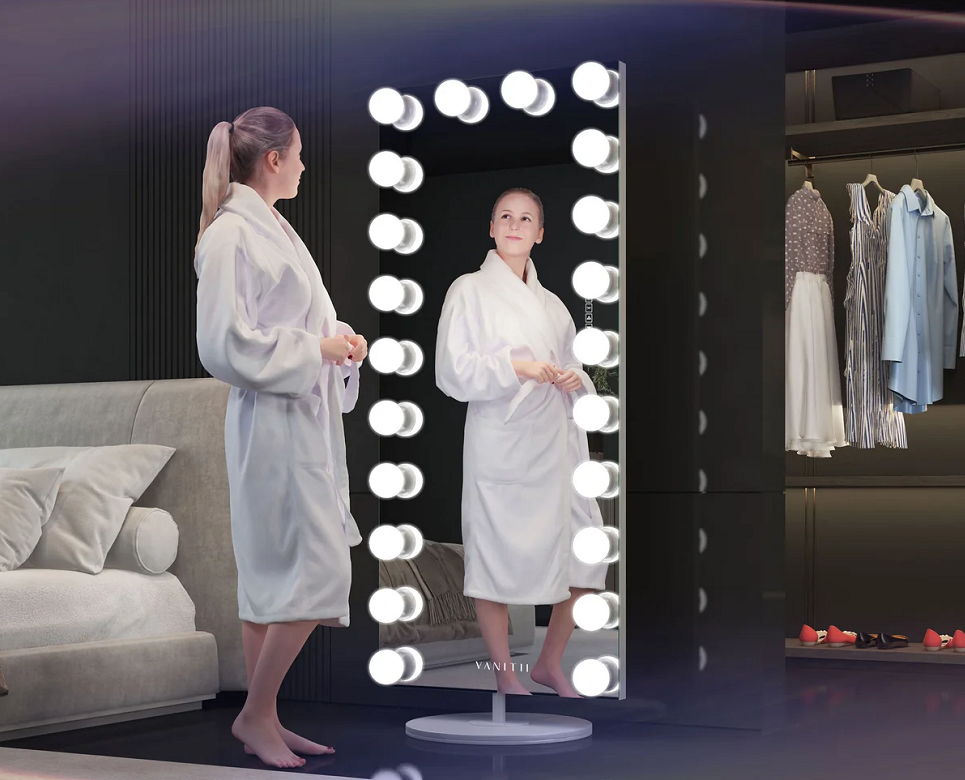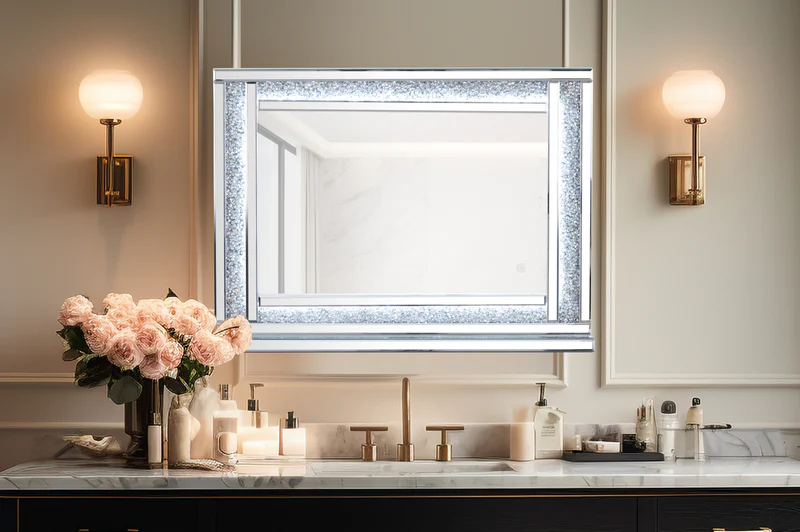Mirrored furniture has become popular in modern home design. You may have seen these shiny pieces in magazines or at a friend's house. But is it right for your home? This guide will help you understand mirrored furniture - how it affects your space, what to consider before buying, and how to use it in different rooms. We'll look at who might benefit from mirrored pieces and who should be cautious.
What Is Mirrored Furniture?
Mirrored furniture includes pieces that have reflective glass surfaces as a main part of their design. These items often have mirrored panels on the outside. Common examples are dressers, nightstands, coffee tables, and cabinets with mirror-like surfaces.
Some furniture uses flat mirrors, while others have beveled edges or patterns. Not all parts of the furniture are covered in mirrors, but the reflective parts are important to how it looks and works.
A Brief History
Mirrored furniture started becoming popular in the 17th century. Venetian glassmakers began using mirrored panels in furniture, which became fashionable among the wealthy in Europe.
In the 1920s and 1930s, mirrored furniture was a big part of the Art Deco style. It was often seen in the homes of movie stars and rich people.
After being less popular for a while, mirrored furniture has become trendy again in recent years. It's now easier to make and comes in many styles and prices.
Current Trends and Styles
Today's mirrored furniture comes in many designs:
- Vintage Look: Some pieces look like old Art Deco or Hollywood styles.
- Simple and Modern: Clean designs with mirrored surfaces on basic shapes.
- Mixed Materials: Mirrors combined with wood or metal for an interesting look.
- Colored Mirrors: Some furniture uses tinted mirrors for a more colorful style.
- Practical Pieces: Everyday items like storage benches now come with mirrors too.
Mirrored furniture is popular because it can fit many different styles. People use it as a main piece of furniture or as a small detail in a room.

How Mirrored Furniture Affects Your Space
Making Rooms Look Bigger and Brighter
Mirrored furniture can make rooms seem larger and brighter. The reflective surfaces bounce light around, which helps small or dark spaces feel more open and airy. For example, a mirrored dresser in a bedroom or a mirrored coffee table in a living room can make these areas feel roomier and lighter.
This effect works with both natural and artificial light. In rooms with few windows, mirrored pieces can help spread what little light there is. At night, they can amplify the glow from lamps, making the space feel warmer.
Creating a Focal Point
Mirrored furniture often becomes a centerpiece in a room. Its shiny surface naturally draws attention and can add a touch of style without much effort. These pieces can make a room look more elegant and serve as conversation starters.
However, it's important not to overdo it. Using one or two mirrored items is usually enough to enhance a room without making it feel overwhelming. The key is to find a balance that works for your space and personal taste.
Things to Think About When Buying Mirrored Furniture
Durability and Lifespan
Mirrored furniture can last a long time if it's made well and you take care of it. The glass is usually strong, but can break if hit hard. The frame material, like wood or metal, also affects how long it lasts. Good quality pieces can look nice for years, but might get small scratches or cloudy edges over time.
Keeping It Clean
Cleaning mirrored furniture is simple but needs to be done often. Dust it with a soft cloth and use glass cleaner for smudges. Avoid strong cleaners and don't let water get inside the furniture. You'll need to clean it more often than regular furniture to keep it looking good.
Cost
Mirrored furniture prices vary a lot. Small items or those with less mirror are cheaper. Larger pieces or those with more mirror cost more. Designer or antique items can be very expensive. Cheap mirrored furniture might not last as long or look as good as pricier options.
Environmental Impact
Making mirrors uses chemicals and energy, which affects the environment. Furniture that lasts longer is generally better for the environment. Mirrors are hard to recycle, so check local guidelines for disposal. Some companies make more eco-friendly mirrored furniture if that's important to you.
Mirrored Furniture in Different Rooms
Bedroom
In bedrooms, mirrored dressers are popular. They make the room feel bigger and brighter. Mirrored nightstands can add a touch of shine next to your bed. Some people like mirrored headboards, which can make a bold statement. These pieces can make your bedroom feel more luxurious.
Living Room
Mirrored coffee tables are common in living rooms. They reflect light and can make the room feel more open. Mirrored consoles along walls can display items while making the space seem larger. Mirrored cabinets can store things and add sparkle to the room. Be careful not to use too many mirrored pieces in one room.
Dining Room
In dining rooms, mirrored buffets can store dishes and make the room feel bigger. Mirrored dining tables are less common but can be eye-catching. They might need more cleaning, especially after meals. A large mirrored piece can reflect your chandelier or candles, adding to the room's ambiance.
Home Office
Mirrored desks can make a home office feel more spacious. They reflect light, which can be good for working. Mirrored storage units can hide office clutter while keeping the room bright. Remember that mirrored surfaces in a home office might show fingerprints more, so they need regular cleaning.

How to Add Mirrored Furniture to Your Room
Matching Your Style
Mirrored furniture can fit different styles. For modern rooms, choose simple mirrored pieces. In traditional spaces, pick mirrored furniture with more details. In mixed-style rooms, mirrored items can add a nice contrast.
Finding the Right Balance
Don't use too many mirrored pieces in one room. Mix them with other types of furniture. One or two mirrored items can make a room look nice without being too much. Put mirrored furniture where it won't reflect messy areas.
Choosing Colors and Textures
Mirrored furniture looks good with many colors, both light and dark. It works well with soft colors. Try putting mirrored furniture near soft fabrics or rough materials like wood. This mix can look interesting.
Avoiding Common Mistakes
Don't put mirrored furniture where people walk a lot. It might get bumped. Don't place it right across from windows because of the glare. In small rooms, be careful not to use too much mirrored furniture. Make sure mirrored pieces are useful, not just for looks.
Who Might Like Mirrored Furniture?
People with Small Homes
If you live in a small apartment or house, mirrored furniture can help. It makes rooms look bigger and brighter. A mirrored dresser or table can open up a tight space.
Those Who Want More Light
For people with dark rooms or few windows, mirrored furniture is useful. It reflects light and can make dim spaces feel brighter. This works well in basements or north-facing rooms.
Fans of Glamorous Looks
If you like shiny, fancy things, mirrored furniture might be for you. It adds a touch of luxury to a room. Mirrored pieces can make a space feel more elegant or special.
People Who Mix Different Styles
For those who like to mix different looks in their home, mirrored furniture can fit in well. It can add an interesting element to a room with various styles. Mirrored pieces can work with both old and new furniture.
Try Mirrored Furniture for Your Home!
Mirrored furniture can make rooms look bigger and brighter. It adds style but needs regular cleaning. It's not great for homes with kids or pets. Before buying, think about your space and how much care you can give it. If you like the idea, start with one piece to see how it fits in your home. Use mirrored furniture to improve your space, not take it over. Consider your needs and style to decide if it's right for you.




Leave a comment
This site is protected by hCaptcha and the hCaptcha Privacy Policy and Terms of Service apply.